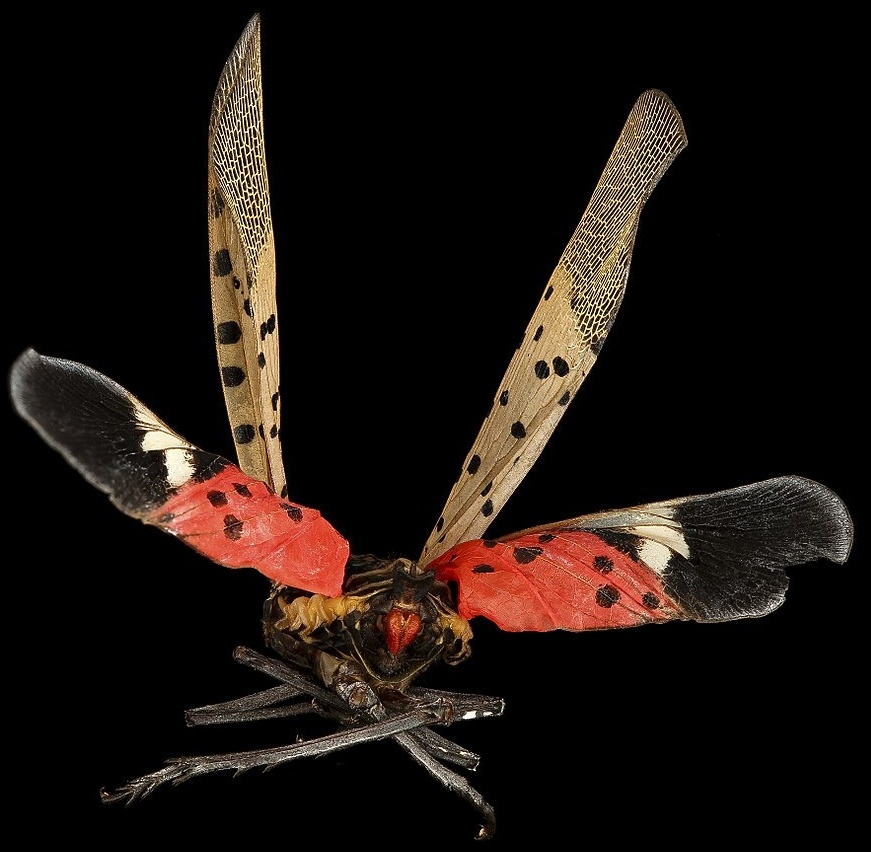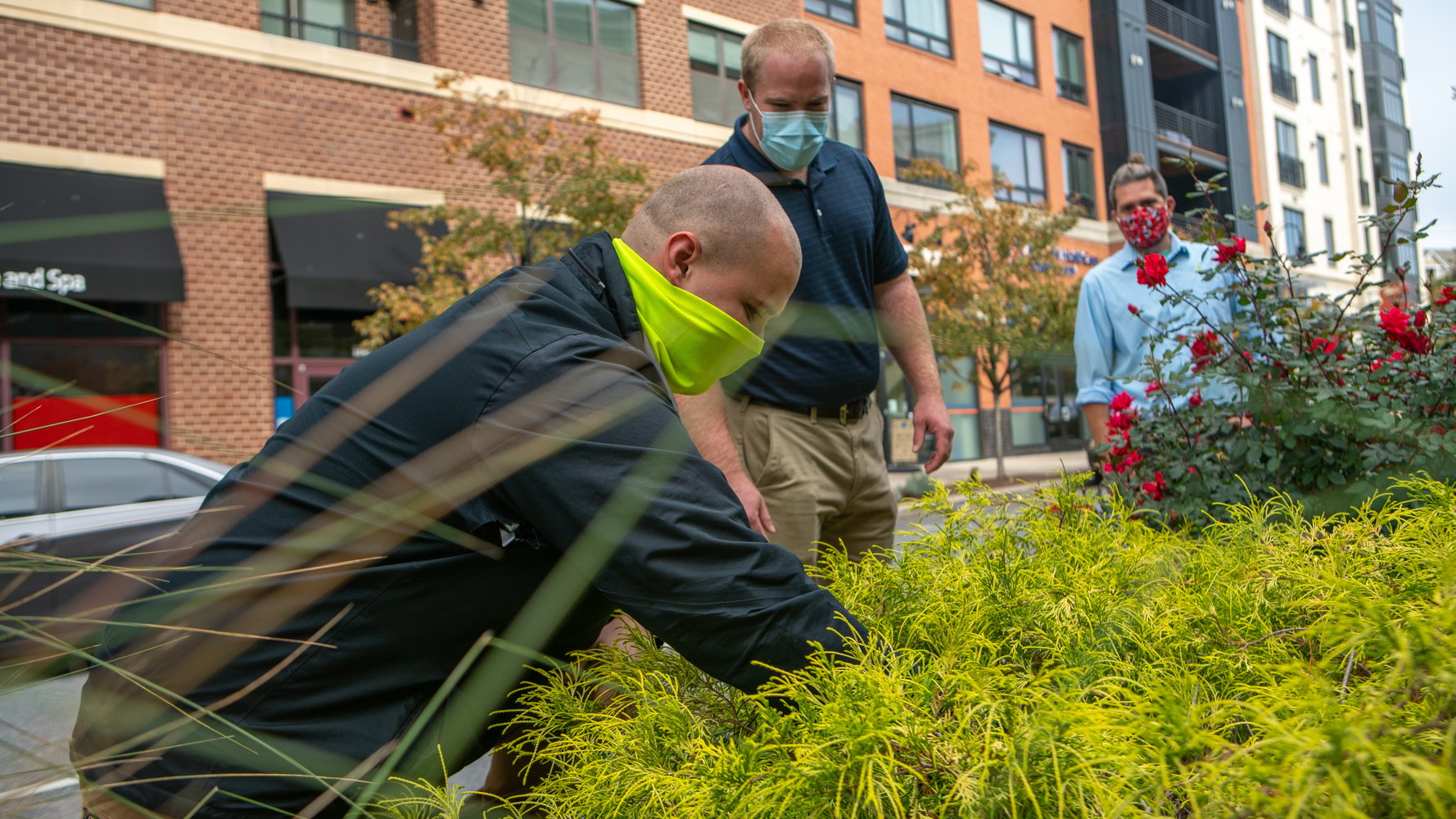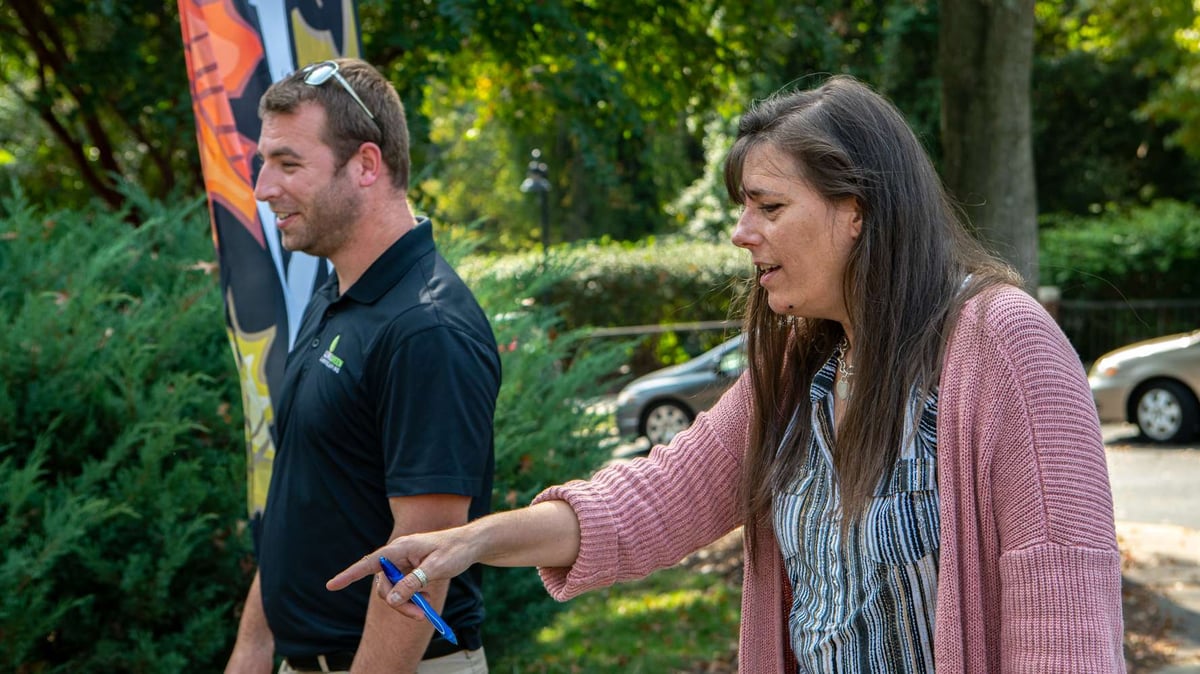This guy is bad news.
Sure, the spotted lanternfly looks pretty enough, with its attractive speckled vibrant wings.
But this destructive invasive insect devours and destroys plants, from orchards and vineyards full of fruit to valuable hardwood trees.
If you see it, smash it.
“Spotted lanternfly is now in all counties in the state of Maryland,” says Joey Schneider, regional manager at Level Green Landscaping, who has been researching the unpleasant pest.
And its favorite host tree, Tree of Heaven, might be on your property.
Here are six things Schneider wants you to know about spotted lanternfly control on commercial properties:
1. Spotted Lanternfly Control: If You See One, Kill It
Memorize this photo so you know what this pest looks like.
Businesses and commercial properties can play an important role in controlling spotted lanternflies in Maryland, DC, and Virginia.
The U.S. Department of Agriculture strongly encourages people to stomp, squash or swat lanternflies when they see them.

They’re harmless to humans, but devastating to plants.
The speckled, four-winged insect is native to China, Vietnam and parts of India.
It first appeared in the United States about a decade ago, when a shipment of stone from Asia arrived in Pennsylvania with lanternfly eggs aboard.
“We want our clients to be aware of this pest so they can be on the lookout,” Schneider says. If you see a spotted lanternfly on your property, kill it, but let your Level Green account manager know, too, he says, so crews can monitor your property for spotted lanternfly control moving forward.
2. You Might Have Its Favorite Tree
Do you have the main spotted lanternfly host on your property?
You might. It feeds on a wide range of fruit, ornamental and woody trees, but Tree of Heaven (Ailanthus altissima) is its preferred host.
“This tree is very common in Maryland,” Schneider says. “You see it all over the place.” That hampers efforts at spotted lanternfly control.

Considered an invasive tree, it reseeds and spreads easily, Schneider says. You might have several of these trees, nestled at the back of your property in a wooded area.
If you do, they have to go, as a crucial step for spotted lanternfly prevention.
Level Green crews check client properties for Tree of Heaven and recommend removal.
3. This Pest Spreads Aggressively
Spotted lanternflies are invasive and can be spread long distances by people who move infested material or items containing egg masses, making spotted lanternfly control challenging. It’s already seriously impacting the country’s grape, orchard and logging industries.

“It could devastate an entire crop,” Schneider says.
It also latches onto a wide variety of hard surfaces, allowing it to travel, undetected, aboard cars, trucks and trains.
4. Nobody Likes It
A big challenge in spotted lanternfly management is the pest doesn’t seem to have any natural enemies. Birds don't like to eat them, and researchers haven’t found predatory or parasitic insects that are making a great impact on the population yet.
5. Spotted Lanternfly Control: What Can You Do?
Businesses and commercial properties can play an important role in controlling spotted lanternflies.

What can you do to help with spotted lanternfly control on commercial properties?
- Inspect your trees and plants for signs of this pest, particularly at dusk and at night when the insects tend to gather in large groups on the trunks or stems of plants.
- Inspect trees (especially Tree of Heaven), bricks, stone, and other smooth surfaces for egg masses, including your vehicles.
- Watch for plants that ooze or weep and have a fermented odor; buildup of sticky fluid called honeydew on plants and on the ground underneath infested plants; sooty mold on infested plants.
- If you find an insect that you suspect is the spotted lanternfly, or a gray mass that you suspect is its eggs, destroy them.
6. What We’re Doing for Spotted Lanternfly Control
Level Green crews have been educated about the spotted lanternfly and its unique egg sac, which looks like a gray smear of mud, Schneider says. Photos of both the fly and its eggs are posted so everybody knows what they look like.
“The Maryland Extension Service puts out a weekly newsletter that we follow, so we know about any new developments,” he says. “We’re aware of any news as soon as it comes in.”
We’re checking client properties for Tree of Heaven and recommending removal.

“There are several agencies and universities working on different control methods, through both chemical and biological vectors,” Schneider says. “There is still not a standard control procedure available.
“It’s important to monitor for this pest, report it when found and to remove the spotted lantern fly’s favorite food source, Tree of Heaven, from your site if present,” he says.
Level Green Landscaping: Prepared For Spotted Lanternfly Control
Here at Level Green Landscaping, we’re taking important steps to help control spotted lanternflies in Maryland, DC, and Virginia.
We’ll do our best to keep your property safe, too.
If you’re not already a Level Green Landscaping client, we’d love to add you to our growing list of happy customers.
Our focus is on commercial properties like offices, mixed-use sites, HOAs, municipalities and institutions in Maryland, Washington DC and parts of Virginia.
Contact us at 202-544-0968. You can also request a free consultation online to meet with us one-on-one.
We’d love to hear from you.
Image Sources: Spotted Lanterfly, Tree of Heaven


